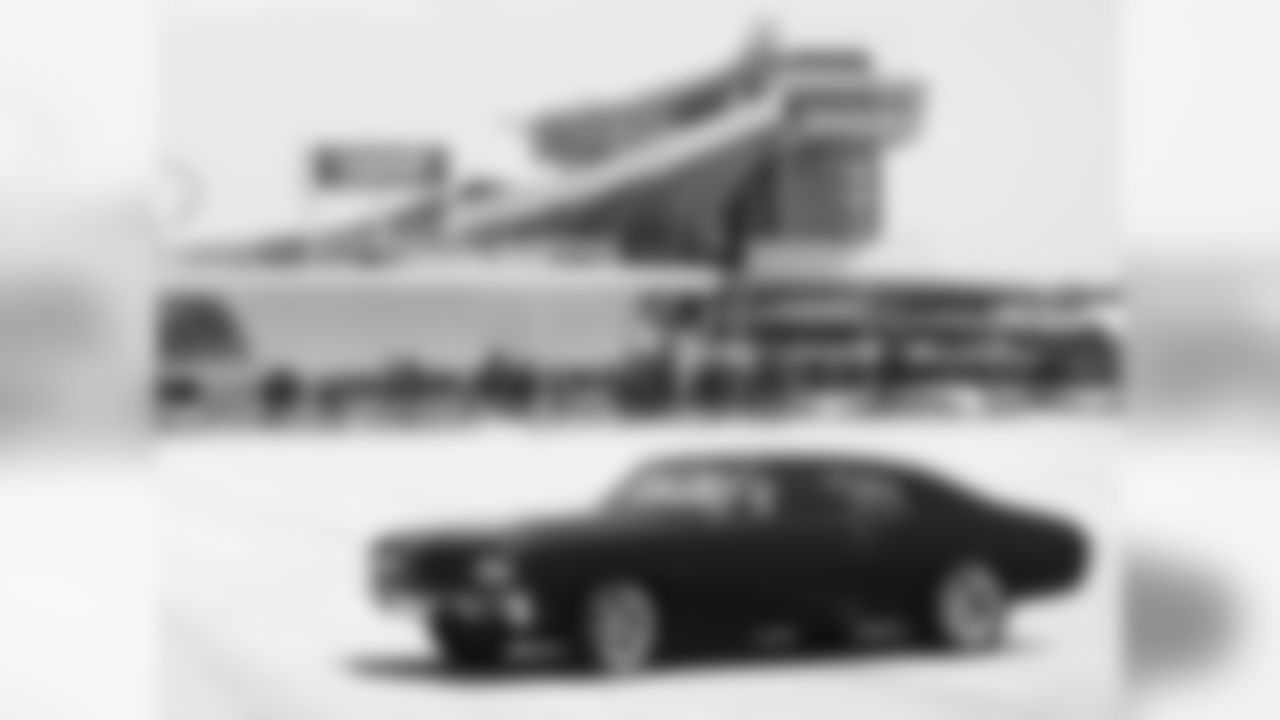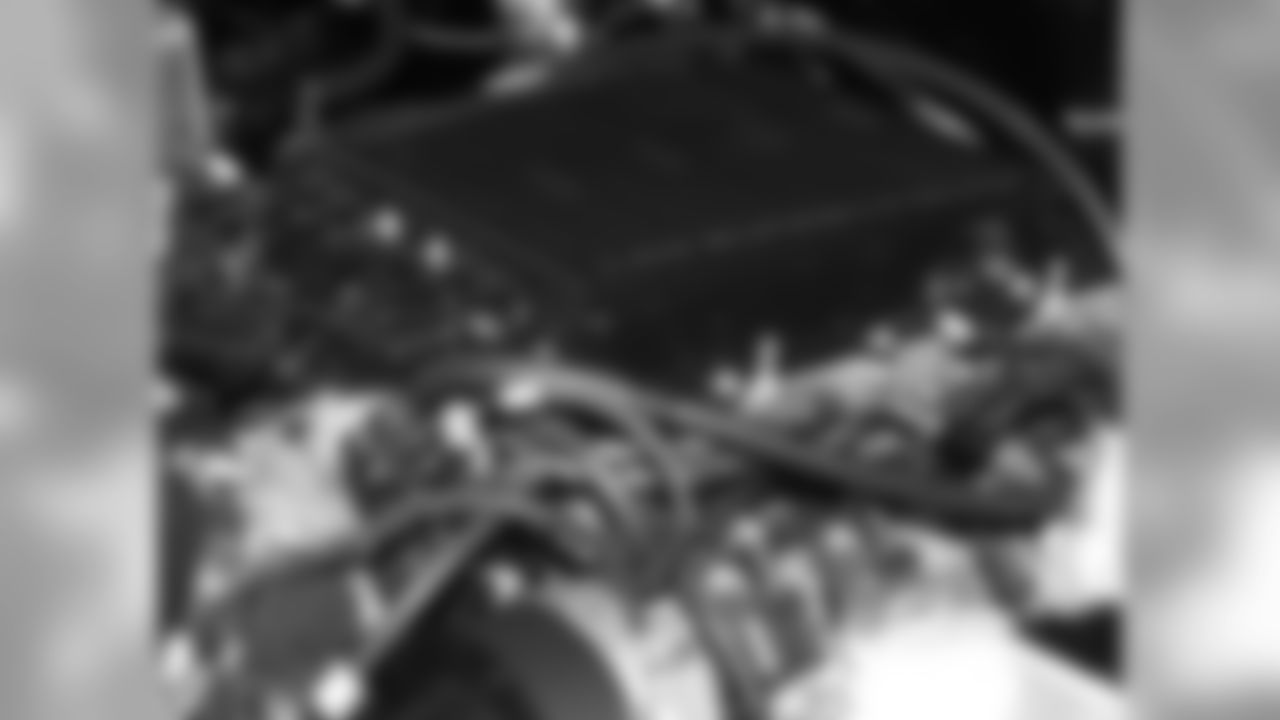"It's always been a dream car of mine ever since I was young."
Kansas City Chiefs left tackle Eric Fisher is a car guy—specifically his newly-restored 1970 Chevelle, which is more-aptly known as the "Ultimate Muscle Car," and the process of restoring it has been a passion project of his for the last four years.
And it's something his teammates know all about.
"He loves that thing," center Mitch Morse laughed. "You can hear him coming from all the way down the road. You hear it and you're just like, "There's Fish."

When he's not in Kansas City playing for the Chiefs, Fisher can be found at home in Michigan in his garage that he has set up to work on cars, and trucks, or basically anything with a motor.
After his rookie season in 2014, Fisher was looking for a project, and he was flipping through Craigslist one day to find a car to restore. He ultimately found the one car he had wanted since he was a kid.

"My uncle was into hot rods and drag racing and had a bunch of project cars. Being around them growing up I always thought it would be a fun hobby to get into," Fisher explained. "I started looking at pictures online one time and (the Chevelle) just caught my attention. It just became a dream of mine to own that car one day."
Fisher bought the car off Craigslist and began what would turn out to be a four-year-long project.
"Restoring a car is always more of a project than you think it is," he explained. "I ran into a lot of hiccups. I ended up naming the car 'natural disaster' because, I think it was in 2015, the city of Detroit flooded and the building the car was in flooded also. It was bare metal at the time, so it totally rusted, which caused a few problems."
That was hardly the end of his problems with the car, though. They continued.
"In 2016, I ended up burning the car to the ground," Fisher said, with a chuckle. "It's something I have to laugh about now that it's done."
Fisher, who wasn't laughing back then, explained what happened that day.
"For my height and size, we had to cut the floor pans out and recess the seats further down," Fisher, who stands at 6-feet-7 and 315 pounds, explained. "When we welded the floor pans back in there, a spark must have flown into just the right spot and smoldered there for the next four hours as we were working.
"We had no idea it was happening. There was no smoke, nothing to tell us anything was wrong. Seven hours later we got a call from the fire department that something was on fire, and it was my car."
Photos of Eric Fisher's 1970 Chevrolet Chevelle












First, there was water, and then there was fire, so the name "natural disaster" really made sense.
Ultimately, after working through a flood, a fire, and several of the other more-usual issues that come along with restoring a car, Fisher and a friend finally finished up the project this past offseason.
"I have a good buddy back home and we've developed a pretty good relationship working on this project," Fisher explained. "He has always been into wrenching on classic cars as a hobby, so I was able to learn a lot working alongside him. We outsourced the bodywork and a lot of the high-tech electrical stuff, but we'd work on it on the weekends or whenever we had time."
"The first year I was like, 'I want to get this thing done,'" Fisher added. "But then you come to this realization that it's not an overnight project. There's a lot that goes into basically building a brand-new car, especially when it's almost all aftermarket parts."
Fisher said the car only has about 400 miles on it right now and that he only plans on taking it out on special occasions—like game days when he's driving to Arrowhead Stadium, although he does enjoy all the comments and waves he gets while driving it around Kansas City.
"I never plan on getting rid of the car, and hopefully, I never have to," he added.

Another reason the car is extra special—besides all the time, money, and headaches it caused throughout the process of restoring it, is that there's a little personalization to it.
"There was a company called Fisher Body in Detroit in the early 1900's," Fisher explained. "It started out as a carriage company and they ended up selling to General Motors later on. According to my family, we are distant relatives of the Fisher brothers that started the company.
"So, it's pretty cool that on the step plate of the car, I have the 'Body by Fisher' logo on there.

As of now, the only teammate of Fisher's who has taken a ride in the car is right guard Laurent Duvernay-Tardif, although that could change soon.
"He came in the locker room one day and said, 'Hey Fish, can I drive that?'" Fisher laughed. "I said, 'I don't think so, but I'll take you for a ride.'"
Duvernay-Tardif agreed to ride in the car, but for all the beauty the car has on the outside, the real story behind the car is what Duvernay-Tardif hadn't yet understood, and that's what was under the hood.
"[Duvernay-Tardif] told me he didn't think he had ever been in a car with over 200 horsepower. I looked at him and said, 'Hold on."
Fisher then accelerated with all the power of the car, which has an LS9 Crate motor with 636 horsepower—the same engine used in a Corvette ZR1.
Basically, it's the most-powerful regular-produced engine that's offered in a GM car.
The torque, the power, the sound, it was enough for the newly-appointed doctor to understand the power behind the wheel, and why Fisher had put so much time, money, and effort into it.
"I gave it a go and he quickly said, 'OK, that's enough.'"
It didn't take long for Duvernay-Tardif to understand what the car is all about, and his reaction that day is the kind of thrill Fisher was looking for when he began this whole process four years ago.
It's the first car Fisher ever restored, and he said it's something he might do again one day but probably not until he has finished his playing career.
"I look back and I learned so much about what I want to do down the road," Fisher added. "It definitely made me think about having a post-career in that field, but it would probably be more of a hobby than anything. I definitely love doing it."
When asked what the next car would be, Fisher said he already knows.
"I want to restore a 1969 Charger," he noted. "That will be probably in retirement. I want to definitely go through the same process but hopefully not run into the same complications."
The real question isn't a matter of when he'll find the time to restore another car, but whether or not Duvernay-Tardif will take a ride in that one after it's done as well.













